Tag Archives: Georges Bank

Offshore wind will not be allowed on Georges Bank – New moratorium is a response to calls from the fishing industry
Ottawa and Nova Scotia say they will not allow offshore wind developers to place turbines on Georges Bank, a lucrative fishing ground that is already protected from offshore petroleum development. Nova Scotia Energy Minister Trevor Boudreau says Georges Bank will be protected with a 10-year moratorium that can be renewed at the end of the term if supported by both governments. “It’s a very lucrative fishing bank, has an incredible resource there that we’re utilizing to its full potential, and this is about saying: that’s where we’re focused on, is that sector in that area,” Boudreau told reporters at Province House. Boudreau and Jonathan Wilkinson, the federal minister of energy and natural resources, announced Thursday that they have directed their joint offshore energy regulator to apply the moratorium. more, >>CLICK TO READ<< 18:29
Notice of Proposed Rulemaking: Chapter 25.76 Lobster Minimum Size
 This proposed rule-making incorporates the minimum lobster size required by Addendum XXVII: Increasing Protection of the Gulf of Maine/Georges Bank Spawning Stock that was originally approved by the Atlantic States Marine Fisheries Commission (ASMFC) in May 2023. In October 2024 Addendum XXXI postponed the implementation of certain measures from Addendum XXVII to July 1, 2025. For compliance with the current Interstate Fisheries Management Plan, this regulation implements changing the minimum size of lobster from 3 ¼ inches to 3 5/16 inches, effective July 1, 2025. more, >>CLICK TO READ<< 09:43
This proposed rule-making incorporates the minimum lobster size required by Addendum XXVII: Increasing Protection of the Gulf of Maine/Georges Bank Spawning Stock that was originally approved by the Atlantic States Marine Fisheries Commission (ASMFC) in May 2023. In October 2024 Addendum XXXI postponed the implementation of certain measures from Addendum XXVII to July 1, 2025. For compliance with the current Interstate Fisheries Management Plan, this regulation implements changing the minimum size of lobster from 3 ¼ inches to 3 5/16 inches, effective July 1, 2025. more, >>CLICK TO READ<< 09:43

New England scallopers face a tough 2025
New England scallopers are looking at another tough year in 2025, as they prepare for a set of federal regulations to protect both their livelihoods and the Atlantic Ocean’s scallop populations. If approved by NOAA Fisheries, the new rules, called Scallop Framework 39, will reduce the number of times that full-time vessels can go drag in some federally-managed scalloping grounds — called “access areas” — in the 2025 fishing year. But they will allow these vessels more time to scallop in the open ocean. The start of the access-area scalloping season will also be pushed back from April 1 to May 15, 2025. It will end on March 31, 2026. Local scallopers and industry representatives say the contents of Framework 39 are not a surprise. Landings have been shrinking over the past four years. “We’re just tightening the belt, and taking a deep breath, and riding the storm out,” said New Bedford scallop vessel manager and owner Tony Alvernaz. more, >>CLICK TO READ<< 17:50
$5.4 million to further innovative research and outreach in support of the lobster industry and fishing communities
 The American lobster fishery and American lobster fishery in the Gulf of Maine, Georges Bank and southern New England continue to face uncertainties due to environmental and socio-economic changes. Such challenges underscore the need for continued research and engagement to not only understand the fishery’s current state but also prepare for its future state. Since 2019, Sea Grant’s American Lobster Initiative has addressed critical knowledge gaps about the American lobster and its fishery facing a dynamic and changing environment. The Initiative supports a regional extension program in the Northeast and a national research competition. Fifteen emerging research projects were selected in 2023 and 2024 for $4.6 million in federal funding by the NOAA National Sea Grant College Program. The projects were chosen through a competitive process, including review by subject matter experts, and require at least a 50-percent match in non-federal funds. more, >>CLICK TO READ<< 10:03
The American lobster fishery and American lobster fishery in the Gulf of Maine, Georges Bank and southern New England continue to face uncertainties due to environmental and socio-economic changes. Such challenges underscore the need for continued research and engagement to not only understand the fishery’s current state but also prepare for its future state. Since 2019, Sea Grant’s American Lobster Initiative has addressed critical knowledge gaps about the American lobster and its fishery facing a dynamic and changing environment. The Initiative supports a regional extension program in the Northeast and a national research competition. Fifteen emerging research projects were selected in 2023 and 2024 for $4.6 million in federal funding by the NOAA National Sea Grant College Program. The projects were chosen through a competitive process, including review by subject matter experts, and require at least a 50-percent match in non-federal funds. more, >>CLICK TO READ<< 10:03
Fishers want ‘incredibly important’ Georges Bank protected against offshore wind development
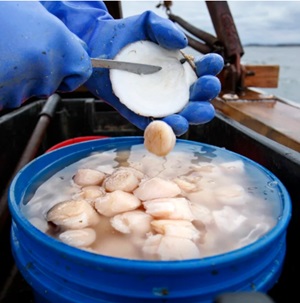 As Nova Scotia rushes to establish an offshore wind industry, some fishers are calling for explicit protection for the rich fishing ground on Georges Bank. The cabinet minister in charge of developing renewable energy projects says he will keep turbines off the bank, but not by changing a piece of legislation that is now moving through Province House. Ian McIsaac, president of the Seafood Producers Association of Nova Scotia, brought his concerns to a legislature committee Monday as it reviews a new bill that, if passed into law, would enable offshore wind development. McIsaac said Bill 471 doesn’t update the Georges Bank moratorium that’s been in place against offshore petroleum development since the 1980s “We feel this is a technical error,” he said. more, >>CLICK TO READ<< 13:42
As Nova Scotia rushes to establish an offshore wind industry, some fishers are calling for explicit protection for the rich fishing ground on Georges Bank. The cabinet minister in charge of developing renewable energy projects says he will keep turbines off the bank, but not by changing a piece of legislation that is now moving through Province House. Ian McIsaac, president of the Seafood Producers Association of Nova Scotia, brought his concerns to a legislature committee Monday as it reviews a new bill that, if passed into law, would enable offshore wind development. McIsaac said Bill 471 doesn’t update the Georges Bank moratorium that’s been in place against offshore petroleum development since the 1980s “We feel this is a technical error,” he said. more, >>CLICK TO READ<< 13:42
Lobster fishery set for reprieve on size limits
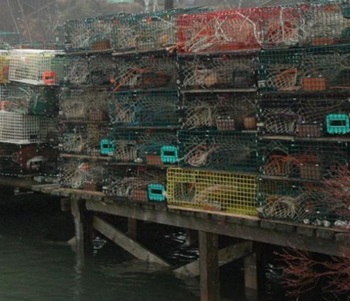 A second delay to implementing minimum gauge and vent sizes for lobsters caught in the Gulf of Maine, Georges Bank and Outer Cape Cod was initiated last week by the American Lobster Board, which operates under the Atlantic States Marine Fisheries Commission (ASMFC), a measure that Maine lobstermen, and Congressman Jared Golden, have hoped and pushed for. The new implementation date would be July 1, 2025, if the measure is adopted by the ASMFC’s American Lobster Board. An earlier delay the ASMFC approved had pushed back to Jan. 1, 2025, the new gauge and escape vent sizes in lobster traps for commercial lobster fisheries in the targeted lobster management areas. When the measure was first approved, it was to take effect based on a “trigger” mechanism. more, >>CLICK TO READ<< 12:52
A second delay to implementing minimum gauge and vent sizes for lobsters caught in the Gulf of Maine, Georges Bank and Outer Cape Cod was initiated last week by the American Lobster Board, which operates under the Atlantic States Marine Fisheries Commission (ASMFC), a measure that Maine lobstermen, and Congressman Jared Golden, have hoped and pushed for. The new implementation date would be July 1, 2025, if the measure is adopted by the ASMFC’s American Lobster Board. An earlier delay the ASMFC approved had pushed back to Jan. 1, 2025, the new gauge and escape vent sizes in lobster traps for commercial lobster fisheries in the targeted lobster management areas. When the measure was first approved, it was to take effect based on a “trigger” mechanism. more, >>CLICK TO READ<< 12:52
Lobster’s nightmare: Vicious Atlantic wolffish is one scary catch in the Gulf of Maine
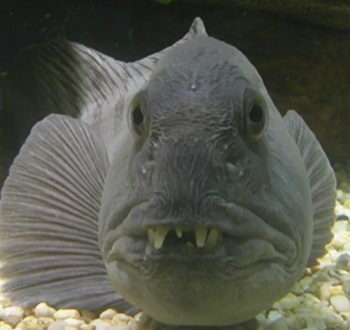 Atlantic wolffish are vicious looking. Their head is huge with gaping teeth that protrude from their lips both top and bottom, giving them a severe overbite. Their tail is tapered with long dorsal and anal fins, which give it a look of an eel. Beware to anyone trying to get a hook out of their mouth! These fish enjoy cold water and can be found throughout the Gulf of Maine to Labrador and down to the Great South Channel of Georges Bank in New England. Amazingly, they can survive in some of the coldest water by producing “antifreeze” proteins stored in their blood and livers. This keeps their blood from freezing under extreme conditions. Around age 5-6, they reach maturity and begin mating. It appears that wolffish are solitary animals except during the mating season, according to NOAA, which occurs in the Gulf of Maine during the fall. The wolffish find mates and remain together until the female lays her eggs. Lobsters beware! The teeth of the wolffish allow them to eat and crush almost anything they want, and what they want are lobsters. They have several rows of very sharp teeth. My husband, always a biologist, when he was fishing commercially regularly dissected the fish he caught to see what they had been eating. Twenty years ago, he opened a 20-pound wolffish and found 21 lobster tails and more body parts in its stomach! more, >>CLICK TO READ<< 14:20
Atlantic wolffish are vicious looking. Their head is huge with gaping teeth that protrude from their lips both top and bottom, giving them a severe overbite. Their tail is tapered with long dorsal and anal fins, which give it a look of an eel. Beware to anyone trying to get a hook out of their mouth! These fish enjoy cold water and can be found throughout the Gulf of Maine to Labrador and down to the Great South Channel of Georges Bank in New England. Amazingly, they can survive in some of the coldest water by producing “antifreeze” proteins stored in their blood and livers. This keeps their blood from freezing under extreme conditions. Around age 5-6, they reach maturity and begin mating. It appears that wolffish are solitary animals except during the mating season, according to NOAA, which occurs in the Gulf of Maine during the fall. The wolffish find mates and remain together until the female lays her eggs. Lobsters beware! The teeth of the wolffish allow them to eat and crush almost anything they want, and what they want are lobsters. They have several rows of very sharp teeth. My husband, always a biologist, when he was fishing commercially regularly dissected the fish he caught to see what they had been eating. Twenty years ago, he opened a 20-pound wolffish and found 21 lobster tails and more body parts in its stomach! more, >>CLICK TO READ<< 14:20
Scallop Research Set-Aside Program to Support 14 New Projects; Several 2024 Announcements Include Multi-Year Awards
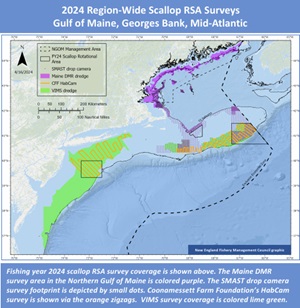 The Atlantic Sea Scallop Research Set-Aside (RSA) Program will support 14 new projects that were selected from the 2024 RSA solicitation. Several awards will support multi-year research, including a four-year regional survey effort. The set-aside harvest is expected to generate $22 million in revenue. Of that total, $5 million will fund the targeted research and $17 million will compensate industry partners who harvest the set-aside scallops. To determine the award amounts, the price of sea scallops was projected to average $14 per pound of meats. Charts, more, >>CLICK TO READ<< 12:38
The Atlantic Sea Scallop Research Set-Aside (RSA) Program will support 14 new projects that were selected from the 2024 RSA solicitation. Several awards will support multi-year research, including a four-year regional survey effort. The set-aside harvest is expected to generate $22 million in revenue. Of that total, $5 million will fund the targeted research and $17 million will compensate industry partners who harvest the set-aside scallops. To determine the award amounts, the price of sea scallops was projected to average $14 per pound of meats. Charts, more, >>CLICK TO READ<< 12:38
Fishery council considering Mayor Mitchell’s plea to open Northern Edge to scallopers
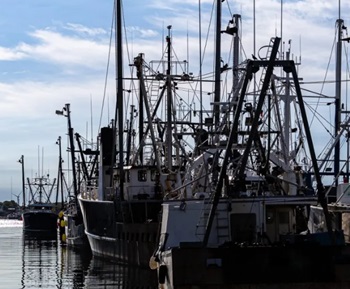 On Tuesday, Mitchell delivered testimony to the New England Fishery Management Council (NEFMC). He cited challenging years ahead for the scallop industry, which is being strained by a slump in prices and fewer days at sea for fishermen; and he stressed the importance of the scallop fishery as a foundational part of the port’s economy. “The industry would benefit greatly by adding these areas to its available fishing grounds.” The region under consideration is the northernmost portion of the broad and productive fishing grounds called Georges Bank. In 1994, the Northern Edge was closed to commercial fishing to protect habitat for spawning cod and other bottom dwelling fisheries. Thirty years later, scallop representatives told the council, groundfish populations like cod have continued to decline while the area has remained locked up to scallopers. more, >>CLICK TO READ<< 06:14
On Tuesday, Mitchell delivered testimony to the New England Fishery Management Council (NEFMC). He cited challenging years ahead for the scallop industry, which is being strained by a slump in prices and fewer days at sea for fishermen; and he stressed the importance of the scallop fishery as a foundational part of the port’s economy. “The industry would benefit greatly by adding these areas to its available fishing grounds.” The region under consideration is the northernmost portion of the broad and productive fishing grounds called Georges Bank. In 1994, the Northern Edge was closed to commercial fishing to protect habitat for spawning cod and other bottom dwelling fisheries. Thirty years later, scallop representatives told the council, groundfish populations like cod have continued to decline while the area has remained locked up to scallopers. more, >>CLICK TO READ<< 06:14
What You Need to Know About Cod
As a large, naturally abundant fish, cod has been eaten by various human populations for centuries. 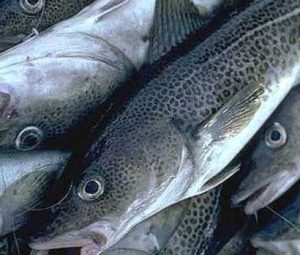 While both of America’s Atlantic cod fisheries are overfished, American stocks of Pacific cod (Gadus macrocephalus) are not. What’s more, various other cod fisheries are located around the globe, some over-exploited, others not. The fish’s prevalence, along with its suitability for eating, means that despite dwindling numbers, cod remains a stalwart of many cuisines. However, there are many things about cod that aren’t widely known. It might surprise some people to learn that cod hunt for prey. They eat a variety of animals, ranging from worms to lobsters and even small fish. Such a diet means cod are capable of growing up to an impressive length of six feet and a weight of over 100 pounds. more, >>click to read<< 11:52
While both of America’s Atlantic cod fisheries are overfished, American stocks of Pacific cod (Gadus macrocephalus) are not. What’s more, various other cod fisheries are located around the globe, some over-exploited, others not. The fish’s prevalence, along with its suitability for eating, means that despite dwindling numbers, cod remains a stalwart of many cuisines. However, there are many things about cod that aren’t widely known. It might surprise some people to learn that cod hunt for prey. They eat a variety of animals, ranging from worms to lobsters and even small fish. Such a diet means cod are capable of growing up to an impressive length of six feet and a weight of over 100 pounds. more, >>click to read<< 11:52
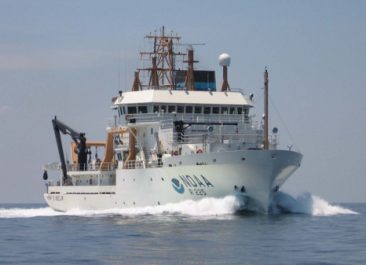
Fishermen To Replace NOAA With NEFSA Due to Reliance on Inaccurate Data to Set Catch Quota
NOAA which has the task of managing and safeguarding the nation’s marine resources, sets catch quotas to ensure sustainable fishing practices annually. However, it has been discovered from an investigation that the agency uses heavily outdated and incomplete information to estimate its fish and marine life population, and subsequently set fish catch quotas’ sets quotas for particular species based on data it collects from its research vessels. NOAA’s research vessel for the Northeast and the Mid-Atlantic is the Henry B. Bigelow, homeported in Newport, Rhode Island, U.S.A. A group called the New England Fishermen Stewardship Association (NEFSA), a new coalition of lobstermen, fishermen, and fishing-adjacent businesses was formed as a replacement due to the reported drawbacks of NOAA. >click to read< 10:5
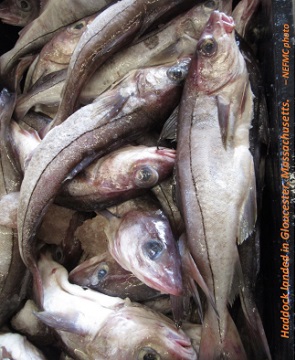
Haddock stock decline prompts catch limits
A low New England haddock stock has prompted regulators to cut the fishing quota of one of the region’s most popular fish. A staple in fish and chips and for fish burgers and home cooks, the amount available from the Gulf of Maine and Georges Bank for 2023 will be more than 80 percent less than the previous year. Prices are relatively high for shoppers, too, with Hannaford, Shaw’s and local fish dealers asking anywhere from $11.99 to $14.99 per pound this month for wild caught Gulf of Maine haddock. Haddock is “subject to overfishing” in the Gulf of Maine while the Georges Bank stock is not, according to NOAA Fisheries. >click to read< 19:02
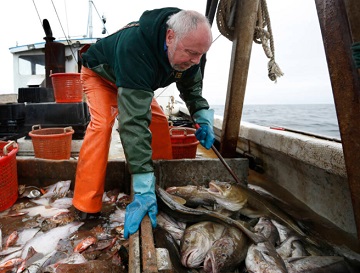
Mega Cut: Haddock, a staple Atlantic fish, is in decline off New England, regulators say
A recent scientific assessment found that the Gulf of Maine haddock stock declined unexpectedly, and that meant the catch quotas for the fish were unsustainably high, federal fishing managers said. “We seem to find plenty, but they can’t,” said Terry Alexander, a Maine-based fisher who targets haddock and other species. “It’s a disaster is what it is. A total, complete disaster.” The fishery management council mandated the 84% reduction in catch quotas for the current fishing year, which started May 1. The change applies to fishers who harvest haddock from the Gulf of Maine, a body of water off Massachusetts, New Hampshire and Maine. Fishers also harvest from Georges Bank, a fishing ground to the east where quotas were also reduced for this year, including adjoining areas overseen by Canadian officials who issued their own major cuts. >click to read< 08:02

Are we really going to let them kill our ocean and our fishing way of life?
Generations of fishermen are no longer fishing because of the restrictions and unfair quota from faulty science. Like I said in earlier posts, we went from 400 active boats down to 17 barely active boats. Meanwhile conservation groups will tell you that we are wiping the ocean out from overfishing. That is so wrong on so many levels, it isn’t even funny. Hard to believe New England was considered to be sustainable for haddock and lobsters. Then fishing efforts went down and now we are no longer sustainable. The only thing that’s changed is windmills are on their way to the Gulf of Maine and the management at NOAA and NMFS are allowing it to happen. Why would they not talk to the people who have committed their lives to the job of harvesting our ocean?! Well, I can’t speak for everyone, but I have a few hypotheses. By Jerry Leeman. >click to read< 16:38
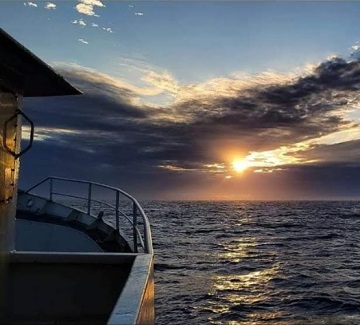
Jerry Leeman: Fishing is my life. Somewhere, people forgot to listen to the generations before us.
I’ve spent all my life on the ocean. My family and friends are fishermen and lobstermen. I grew up on an island in Maine and almost everyone was in some form of fishery, whether it be groundfishing, gill netting, seining and lobstering. We even had shrimping till that was mis managed away. I grew up watching these men and women harvesting the ocean. Rules were put into place to harvest the ocean responsibly and sustainably for future generations. Most people in this nation know little to as of why our fish stocks became depleted. Other nations like Russia and other European super trawlers were allowed to pillage our waters along the New England coast. They were eventually banned, but the destruction had been done. We’ve spent years restricting ourselves fishing, going out of our way bending backwards to rebuild our fish stocks. >click to read< By Jerry Leeman 11:19
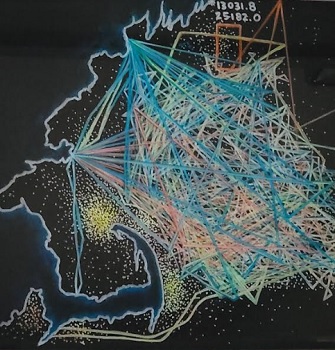
What’s wrong with the management?!! By Jerry Leeman
So, I’m using this piece of artwork, because I’m not driving 3 states away to pull up all my tracks. This is only a piece of artwork depicting a small percentage of the ground I’ve covered in the Gulf of Maine and George’s Bank. We all talk about the best science, while the best science is done when you have the best observations. That is the whole basis of science is study thru observations. How come a man like me who has over 14 years documented at sea in 21 years not have a voice in the management of our nation’s fishery? No one has ever asked me what I am seeing. They just hand me a piece of paper every time there’s a rule change. Then I figure out how I’m going to manage what little abundance they allot me. Please click to read the rest. >click to read< 15:07
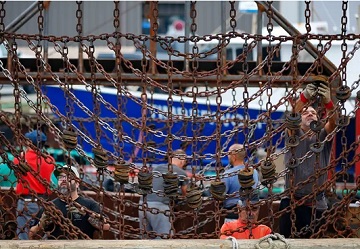
Atlantic sea scallops at lowest biomass in over 20 years and what that means for New Bedford
A Scallop Survey Report presented at the NEFMC meeting Tuesday showed the Atlantic Sea scallop fishery is facing its lowest biomass in over 20 years. Throughout the NEFMC jurisdiction, the survey estimated a biomass decrease of almost 30%. The Georges Bank region saw the largest drop, around 36%. Tyler Miranda, a scalloper Captain and owner who came to prominence during the recent scallop license allocation debate, said that though it is of concern, the announcement does not worry him too much. “Obviously I worry, but what I’ve come to realize about the scallop industry is it fluctuates year to year,” Justin Mello said he felt similarly. “I’m only gonna go into the areas they allow us to, that’s why they call it fishing and not catching.” >click to read< 14:20
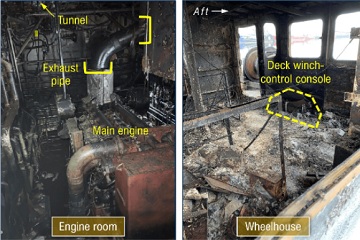
F/V Nobska: Back-to-Back Hydraulic Hose Failures Caused Destructive Blaze
On April 30, 2021, while fishing for haddock at Georges Bank, the crew of the F/V Nobska spotted a fire on the lagging of the main engine’s exhaust pipe. After putting it out, they determined that the source of the fuel was a broken hydraulic hose located in a pipe tunnel, which ran between the wheelhouse and the engine room. The crew replaced the hydraulic hose and removed the oil-soaked lagging from the exhaust pipe, leaving the pipe bare. With the situation apparently resolved, they went back to fishing. About four hours later, the captain of the Nobska noticed that there was black smoke coming out from underneath the wheelhouse winch-control console,,, >click to read< – SEARCH RESULTS FOR: F/V NOBSKA 19: 40
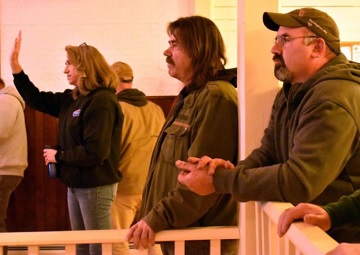
DMR brings news of declining young lobsters, resiliency measures to local lobstermen
“We’re not talking about whales.” Those were among the first words from Kathleen Reardon, lead biologist for the Maine DMR, to lobstermen at Stonington Town Hall on March 31. Both ongoing lawsuits and legislation aimed at protecting right whales from entanglement with lobster trap lines have delayed lobster stock assessments and analysis. But now lobster councils are meeting across the state to hear about a draft addendum to the Atlantic States Marine Fisheries Commission lobster management plan for the Gulf of Maine and Georges Bank, where 90 percent of U.S. landings are. The ASMFC manages near-shore fisheries for 15 states, including Maine. The draft addendum would affect Lobster Management Areas 1 and 3 and off Cape Cod as well as Maine, New Hampshire and Massachusetts. >click to read< 16:37

Fishermen not feeling the effects of ‘marked decrease’ in Atlantic cod population
What started as a research presentation on rising ocean temperatures and decreasing cod supply by NOAA quickly turned into a revealing conversation about how scientists and their data often do not reflect fishermen’s experiences. Findings by a working group of researchers indicated that the lifecycle of the species is being influenced by the environment, specifically rising ocean temperatures, which have changed the fish’s spawning behavior and their predator-prey relationships. Fishermen did question is whether these facts are having the same implications that the researchers believe. Al Cottone, a Gloucester fisherman, says he feels cod are in different areas, and that he has noticed a change in the tides, too. >click to read< 10:56
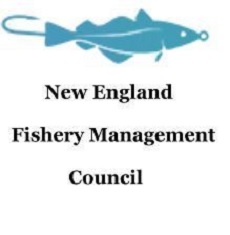
NEFMC Endorses 2022 U.S./Canada TACs; Discusses Groundfish Framework 63
During its late-September 2021 meeting, the New England Fishery Management Council agreed by consensus to accept the U.S./Canada Transboundary Management Guidance Committee’s (TMGC) total allowable catch (TAC) recommendations for three shared groundfish resources on Georges Bank. These involve Eastern Georges Bank cod, Eastern Georges Bank haddock, and Georges Bank yellowtail flounder. The TMGC recommended the TACs based on advice from the U.S./Canada Transboundary Resources Assessment Committee (TRAC). >click to read< 14:34
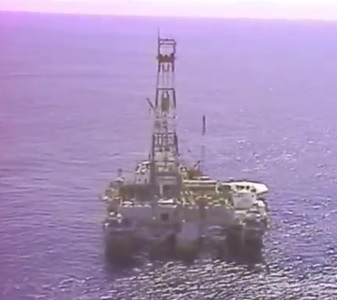
Shelburne Warden Advocates Extension Of Georges Bank Oil and Gas Exploration Moratorium
Warden Penny Smith says the moratorium is important for the fishing industry. “Billions of dollars of lobster, scallop and ground fish landings come from Georges Bank. This industry is our coastal communities’ economic mainstay, and it cannot be put at risk. It’s one of the richest fishing grounds in the world, and it supports the provincial economy, so we must continue to protect these important fishing grounds,” said Smith. The moratorium has been in place for 33 years, and a decision on extension needs to be made by the end of 2022. >click to read< 07:50
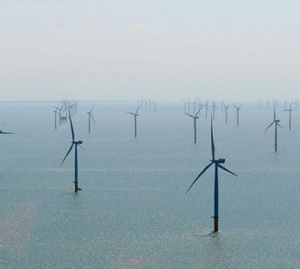
‘Tragedy of the Commons’ Will be the Fate of Marine Environment in Atlantic Offshore Wind Farms
Like the English commons, the Atlantic waters could take just so much ‘grazing’. The Canadian government finally recognized the cod fishery had crashed and closed it;,, Recognizing that fish could not be owned until they were caught, government regulators attempted to at least partially privatize fishing rights. So too, the waters in which they swim (Hague Line dividing CN and US waters in the Gulf of Maine and on Georges Bank.) It was that bottom and those waters that wind farm builders wanted “rights”.,,, So, the question arises “why don’t the fishing interests move to protect these sensitive marine habitats?” They have tried without much success. >click to read< 18:43
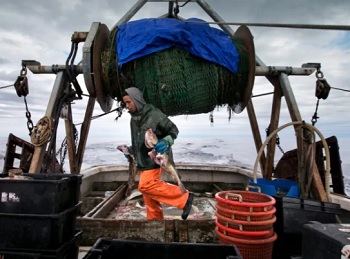
Georges Bank haddock – Canada, U.S. agree to slash quota by 45%
Canada and the United States have agreed to a large quota cut for the haddock stock that straddles their shared fishing grounds on Georges Bank south of Nova Scotia. Committee records from 2019 and 2020 show the Georges Bank haddock population is still healthy, but on the decline as the “extraordinarily strong” population hatched in 2013 is caught or dies off. COVID-19 curtailed or cancelled scientific surveys on Georges Bank in 2020. “We have no analytical model on haddock, had no U.S. surveys,,, >click to read< 21:05
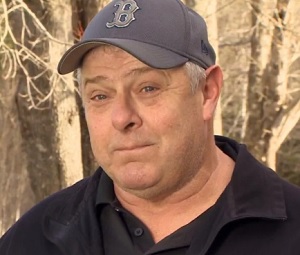
Would throwing the big ones back keep Atlantic halibut fishery on a roll? DFO considers changing the rules!
The investigation is being undertaken at the request of companies that fish halibut using hook and line from the Grand Banks off Newfoundland to Georges Bank off southern Nova Scotia. They’d like to see it happen. “Releasing large halibut is something that fishermen will say, and I will say, that’s just logical, because the majority of the large halibut are females. But you really don’t know just what goes on after you release a large halibut like that,” said Gary Dedrick, a halibut fisherman from Shelburne, N.S., and a founding member of the Atlantic Halibut Council. “So this is where there is monitoring on the bottom and how long they live.” >click to read< 09:45
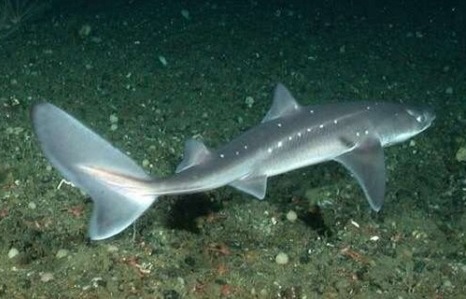
Spiny dogfish eat small Atlantic codfish! DNA may provide some answers
Conventional observations show that spiny dogfish in the western North Atlantic rarely eat Atlantic cod. However, some believe the rebuilding dogfish populations are limiting depleted cod numbers by competition or predation. To find out what is going on, NOAA Fisheries scientists looked to genetic testing to confirm cod presence in dogfish stomachs. >click to read< 13:10
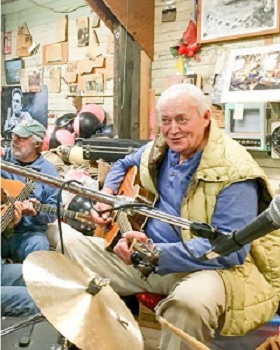
What a life Stevie Robbins had
Inside an old trap shop on West Main Street down by the harbor, Stevie Robbins for many years played his guitar and sang on Sunday mornings, starting at 7 a.m. Anyone who wanted to could join him, and many did. ,, He was a highline fishermen, one of the first to fish off the Georges Banks. A master boat handler and lobster catcher, he was tough and strong and determined, said Brian in a phone interview. “He could walk across your living 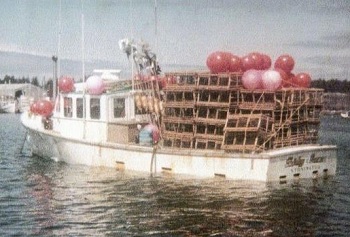 room floor and there’d be a lobster hanging off his pant-leg by the time he got to the other end,” he said. At first he fished inshore with Brian. Then the stories about the offshore fishermen, Bob Brown and Benny Beal, started to trickle down to the Robbins boys. In 1977, they set out for the offshore grounds in the 44’ Shirley and Freeman, named for his mother and grandfather. At first, they had little luck. What they did catch they sold to Clyde Conary. “We didn’t make Clyde any money,” said Brian. “He’d have a cigarette, and say, ‘I got faith in you boys.’” photo’s, >click to read< 08:25
room floor and there’d be a lobster hanging off his pant-leg by the time he got to the other end,” he said. At first he fished inshore with Brian. Then the stories about the offshore fishermen, Bob Brown and Benny Beal, started to trickle down to the Robbins boys. In 1977, they set out for the offshore grounds in the 44’ Shirley and Freeman, named for his mother and grandfather. At first, they had little luck. What they did catch they sold to Clyde Conary. “We didn’t make Clyde any money,” said Brian. “He’d have a cigarette, and say, ‘I got faith in you boys.’” photo’s, >click to read< 08:25
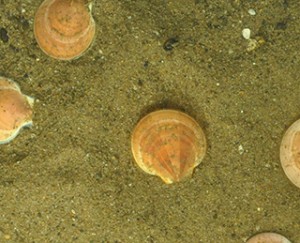
Federal Fishing Expansion Could Endanger Right Whales
Trump regulators opened about 3,100 square miles of ocean to fishing for scallops and fish that live near the bottom of the ocean such as halibut and flounder that had been closed for more than two decades, including a section of Georges Bank off Cape Cod, Mass., and part of the ocean near southern New England.,, A scallop fishing industry group, Fisheries Survival Fund, said no scallop vessel has ever had an interaction with a right whale. >click to read< 11:29

1979: NBC 10 reported on oil platforms drilling offshore New England
The Texas Towers radar platforms that were the subject of our special broadcast in the 1960s were gone by 1964. In the next two decades, they were replaced by a different kind of platform — one that drills for oil offshore. In 1979, one was in Narragansett Bay headed south to the Baltimore Canyon to drill. And in 1981, two platforms were drilling for oil in the Georges Bank, much to the consternation of commercial fishermen who worried their rich fishing grounds would be disrupted and polluted. >video, click to read<16:34

































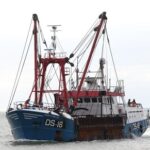

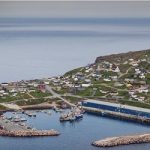
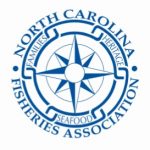
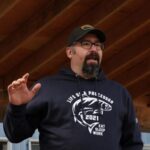
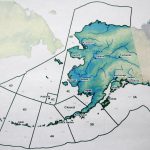
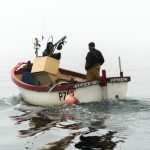
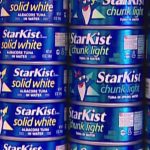
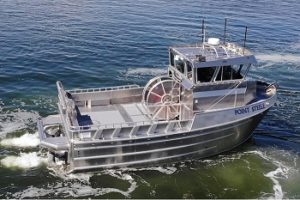



Maine delegation requests comment period extension for BiOp with profound impact on Maine lobstermen
The BiOp is an assessment of a federal agency’s impact on an endangered species. In this case, the Biological Opinion assesses the effectiveness of regulations that the National Oceanic and Atmospheric Administration has imposed on the Maine lobster fishery to protect the North Atlantic Right Whale. Maine lobstermen have already taken significant steps to protect the right whale, despite there being no direct evidence that a single right whale serious injury or mortality has been attributable to the Gulf of Maine or Georges Bank lobster fishery since 2004. >click to read< 09:29
Share this post